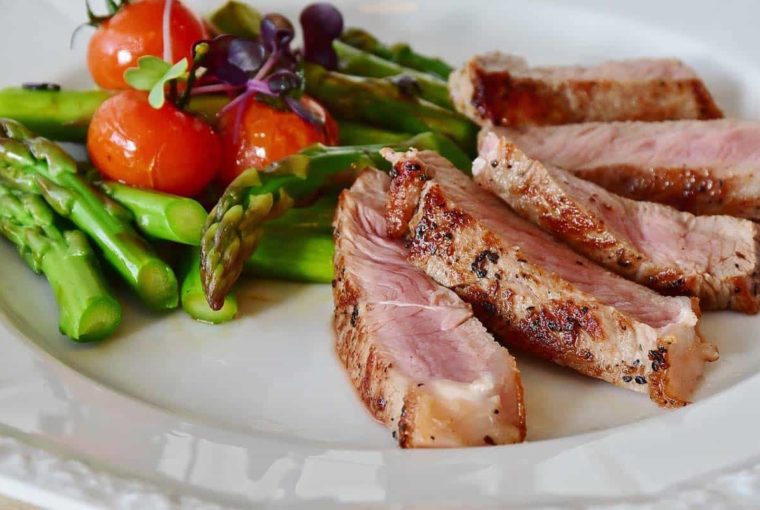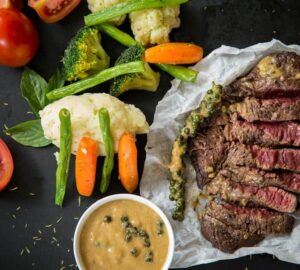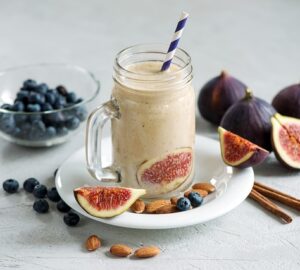Are you planning to go on a low carb diet? You’re in the right place.
A low carb diet refers to a meal with low carbohydrates. The focus is on consuming more clean proteins, healthy fats, vegetables, and low-sugar fruits.
This post focuses on a low carb meal plan, benefits of low carb diets, and more. Keep reading!
What Low Carb Diet Entails
The low carb diet involves a reduction in carb consumption. Take note; it doesn’t mean the absence of carbs. That’s a different thing entirely.
There’s no one-size-fits-all low carb diet plan. You can decide how many carbs you would like to have removed from your daily meals. Generally, individuals on low carb meal plans resist high carb foods. These include pastries, crackers, pasta, bread, and foods with some added sugars.
Carbs (carbohydrates), fat, and protein are three vital foods to the body. Without these foods, the body can’t work properly.
Carbohydrates furnish our body with the energy needed for day to day activities. The body then breaks down carbohydrates for immediate or later use. If the body isn’t ready to utilize carbs after consuming such foods, it will store them in your liver or muscles, and use later.
Now here’s the thing. If your body wasn’t able to utilize the stored carbs, it would convert them to fat.
Reasons To Follow A Low Carb Diet Plan
There are diverse reasons to consider following a low-carb diet plan. One of the reasons people follow such a diet plan is because if the body doesn’t get extra carbs, it won’t store excess fat.
This process is essential for those seeking to lose weight. The idea is that the body will be pushed into burning some of its stored fat, instead of the carbohydrates, which encourages weight loss.
Besides weight loss, most people choose low carb diet plans for other reasons and benefits.
Below are the benefits low carb diet plans can offer you.
- Blood sugar control
- Reduce appetite and cravings
- Low blood pressure
- Raises good cholesterol levels
- Digestive support
- Skin improvement
- Stable energy levels and mood
- Clearer thinking
- Reduces the risk of any long-term health complication
Low Carb Diet – What Counts?
There is no clear definition regarding what a low carb diet constitutes. The truth is what one considers as a low carb diet might not be the same thing for another person.
Several factors determine one’s optimal carb consumption. These include your gender, age, activity level, personal preference, body composition, and metabolic health.
Your metabolic health can impact your carb needs. An individual with metabolic syndrome, type-2 diabetes or obesity, will have varied carb needs to someone with normal health. Those in this category are less likely to tolerate more carbs.
Individuals that are physically active or have higher muscle mass can tolerate more carbohydrates than individuals who are sedentary.
A low carb diet can prove helpful in a weight loss program. The lower your carb consumption, the more chances you have to lose weight and reduce sugar levels.
You also need to choose and stick with a carb level that works best for you.
Note: Individuals taking certain medications are advised to discuss their low carb diet plans with their doctors before taking any decision. That’s because medications like insulin, glinides, or sulphonylureas cause low blood sugar (hypoglycemia). Starting a low carb diet under such a condition can be fatal.
Low Carb Diet Plan And Tips
Being consistent on a low diet plan isn’t an easy feat. Many find it challenging, most notably, at the start.
If you’re having issues understanding or coping with your low-carb diet plan, the tips below might be of great help.
1. Identify the low carb foods;
It’s called a “low-carb” diet, not a “no-carb” diet plan. So this means you will still be consuming carbs from time to time, but only in minute quantities.
Therefore, your first mission should be to identify the different low carb foods. You can make a long list of foods with low carbs, so you don’t end up making the wrong choices.
Examples of low carb foods include;
- Eggs
- Fish
- Seeds and nuts
- Leafy green vegetables
- Lean meats like chicken breast, pork, or sirloin
- Dairy products (unsweetened). An example is the Greek plain yogurt
- Oils such as rapeseed oil, olive, and coconut oil
- Fruits such as strawberries, blueberries, and apples
2. Develop your meal plan
Now that you can identify the low-carb foods, next is to design your diet plan, which should be realistic. Decide your low carb meal options for each week.
It makes sense to draft your low carb meal plan before you hit the grocery store. Taking this decision will help you get the right food supplies and spend wisely. You won’t find yourself buying the things you don’t need.
Again, meal planning will make following a low carb diet a breeze.
3. Consider meal prep in advance
Our busy lifestyles can make meal preparation impossible sometimes. As a result, you may find yourself making unhealthy food choices at times, when the hunger becomes unbearable.
When creating a low carb diet plan, consider preparing your meals in advance. Doing so will help you to save money and time. Even in busier weeks, you can keep up with your low diet plan.
Choose a free time to get your food supplies and prepare your low carb meals in advance. After preparation, store the meals in different containers and place them in the refrigerator. Prepare different meal varieties so you won’t get tired of eating the same food over and over.
Examples of easy low carb diets you can prepare in advance if you’re someone with tight schedules.
- Protein pancake
- Egg muffin
- Chicken lettuce wrap
- Greek yogurt bowl
The list goes on and on. You can explore other meal options too. But ensure you don’t store already-prepared foods in the refrigerator for a more extended period.
Note – You can also get your food supplies in advance and store them in the fridge. Store raw foods in covered or sealed containers, and keep them at the bottom of the refrigerator. The fresh foods should always be below the cooked ones so that liquid won’t drip down and contaminate your cooked meals.
4. Familiarize yourself with the serving sizes and carb counts of foods
How well do you know the carb counts of different carbs? First, get yourself acquainted with the serving sizes and carb count of foods, as it would help make your low-carb diet journey a breeze.
Many low carbohydrate diets only offer 20 to 50 grams of carbs daily. As a result, if you’re adhering to a low carb diet plan, choose one with lower carb counts and higher nutritional value per serving.
Below foods contains approximately 15 grams of carbs.
- Berries – 1 cup
- Melon cubes – 1 cup
- Milk – 8 ounces
- Cup corn – ½ cup
- Cooked rice – 1/3 cup
- Bread – 1 slice
- Peas – ½ cup
- Plain yogurt – 6 ounces
- Raisins – 2 tablespoons
- Apple – 1 tennis ball size
- Orange – 1 tennis ball size
5. Consider carrying some low carb snacks
You should consider moving with low carb snacks, whether you’re going to work or somewhere else. Have them in your bag, neatly stored, in case hunger unexpectedly strikes. You might get extremely hungry and pressured to make unhealthy food choices.
So have some low carb snacks in your bag to consume between meals.
It’s also essential to have your snacks’ portion size regulated, so you don’t overeat. Below are low carb snacks;
- Cheese
- Carrots
- Nuts – a handful
- Unsweetened yogurt
- Some hardened boiled eggs
6. Exercise your body
Exercise is vital to maintain good health. It can also help you achieve your weight loss or health goals much quicker. Avoid a sedentary lifestyle or exercising excessively.
The CDC (Centers for Disease Control and Prevention) recommends that adults need to exercise 150 minutes per week for moderate health benefits. For optimal health benefits, you can do 300 minutes per week.
Weight lifting or strength training is also necessary, according to the CDC. This will help improve your general health, too.
Note: When you’re on a low-carb diet, there are physical activities you shouldn’t do. An example is engaging in distance running. Such a physical activity is intense and requires enough energy, which you won’t be getting. Remember, carbohydrates fuel the body, and you have limited intake, thanks to your low carb diet plan.
7-Day Low Carb Diet Plan
Here’s a simple 7-day diet plan to help you kick-start your low-carb diet journey. You can expand this list to 30 days and more. What matters most is that you know the various low-carb foods, their serving sizes, and carb counts.
You can try out various combinations of low carb diets. As long as your food combinations taste good, you’re good to go. Below is a 7-day low carb meal plan.
Day 1:
Breakfast – A serving of broccoli egg burrito and low-carb beacon (10grams of carbs and 259 calories).
Morning Snack – A medium-sized orange (15 grams of carbs and 62 calories)
Lunch – A serving of chipotle-cheddar broiled avocado halves. Here you have 2 cups mixed greens, including tsp of vinaigrette and ½ of avocado (14 grams carbs and 340 calories.
Afternoon Snack – ½ cup of raspberries (7 grams of carbs and 32 calories).
Dinner – A serving of shrimp scampi zoodles, combined with a 3-inch sliced whole-wheat baguette that’s toasted and drizzled with a tablespoon of olive oil (47 grams carbs and 508 calories)
Day 2:
Breakfast – Get a serving of two-ingredient banana pancake, and top with 1 tablespoon of maple syrup and 1/ cup of blueberries (48 grams carbs and 260 calories).
Morning Snacks – Consume 2 plums (15 grams of carbs and 61 calories)
Lunch – Get a serving of egg salad lettuce wraps (21 grams carbs and 436 calories)
Afternoon Snack – Get 8 almonds (2 grams carbs and 62 calories).
Dinner – A serving of spaghetti squash combined with roasted tomatoes, beans and almond pesto (37grams carbs and 400 calories)
Day 3:
Breakfast – Get a serving of “egg in a hole” pepper, combined with avocado salsa (14 grams carbs and 285 calories)
Morning Snack – 1 oz. of Cheddar cheese (6 grams carbs and 115 calories).
Lunch – A serving of cabbage salad and Asian beef, with a medium-sized orange (32 grams of carbs and 300 calories)
Afternoon Snack – 1 medium-sized apple (25 grams carbs and 95 calories)
Dinner – A serving of Balsamic and Parmesan broccoli, with hummus-crusted Chicken. (16 grams of carbs and 436 calories)
Day 4:
Breakfast – A cup of raspberries, combined with ½ cup of whole-milk plain Greek yogurt, including a tablespoon each of shredded unsweetened coconut and silver almonds (23 grams of carbs and 260 calories).
Morning Snack – A cup of red grapes and 1 oz. Cheddar cheese (28 grams of carbs and 218 calories).
Lunch – A serving of cauliflower rice, combined with a vegan burrito (15 grams of carbs and 298 calories)
Afternoon Snack – Consume 1 plum (8 grams of carbs and 30 calories)
Dinner – A serving of creamy garlic dressing with superfood chopped salad (19 grams of carbs and 409 calories).
Day 5:
Breakfast – A serving of baked omelet muffins and medium-sized orange (20grams of carbs and 273 calories).
Morning Snack – A cup of blackberries (14grams of carbs and 62 calories)
Lunch – A serving of veggie salad and white bean (30 grams carbs and 360 calories)
Afternoon Snack – A medium-sized apple (25 grams of carbs and 95 calories)
Dinner – A serving of cauliflower rice bowls, kimchi and Korean steak (20 grams of carbs and 414 calories)
Day 6:
Breakfast – A serving of two-ingredient banana pancake, and top with a tablespoon of maple syrup and one cup of blackberries (41grams of carbs and 238 calories).
Morning Snack – Get 12 almonds and 2 plums (18grams of carbs and 153 calories)
Lunch – A serving of zucchini noodles combined with quick turkey Bolognese and a medium-sized orange (31grams of carbs and 278 calories).
Afternoon Snack – Air-popped popcorn drizzled (3 cups) and 1 teaspoon of olive oil and a pinch of salt (18 grams of carbs and 135 calories)
Dinner – A serving of Mexican cauliflower rice and guacamole chicken (13 grams of carbs and 397 calories)
Day 7:
Breakfast – A serving of low-carb blueberry muffins and a cup of raspberries (30 grams of carbs and 268 calories)
Afternoon Snack – 6 almonds and 2 plums (17 grams of carbs and 107 calories)
Lunch – A serving of chicken satay bowls, combined with spicy peanut sauce (14 grams of carbs and 351 calories).
Afternoon Snack – A medium-sized orange (15 grams of carbs and 62 calories)
Dinner – A serving of Philly cheesesteak stuffed pepper and a serving of oven sweet potato fries (31 grams of carbs and 430 calories).
Conclusion
Weight loss is not the only benefit low carb diets offer. However, it’s one of the biggest reasons people consider going on a low carb diet. Obesity can lead to serious health problems, which could be life-threatening. A low carb diet can help you lose weight and improve your health generally. So, it’s a wise meal choice to make.




